As we strive towards a more sustainable and minimalist lifestyle, the concept of decluttering and simplifying our spaces has become increasingly popular. The fashion industry, in particular, has been promoting the idea of owning fewer clothes and making conscious choices when it comes to purchasing new items. However, with limited storage space in most homes, organizing one’s wardrobe can be a daunting task. This is where a clothing rack comes in handy – not only does it provide a practical solution for hanging clothes, but it also adds an aesthetically pleasing element to any room.
In this article, we will guide you through the process of making your own clothing rack. Using simple materials and tools that are easily accessible, you can create a functional piece of furniture that fits your personal style and needs. With step-by-step instructions and helpful tips, you’ll be able to customize your clothing rack to fit your wardrobe and make use of unused space in your home. Whether you’re looking for an easy DIY project or simply want to organize your clothes in a more visually appealing way, this article will provide you with all the necessary information to make your own clothing rack.
Assessing Your Space And Needs
Ah, the joys of clothing racks – an essential piece of furniture that often goes unnoticed. You might think you don’t need one, but let’s face it: maximizing efficiency is crucial in organizing options for your wardrobe. After all, nobody wants a cluttered closet with clothes piled up on top of each other.
The first step to making a clothing rack is assessing your space and needs. Take a look at your room and visualize where you want the rack to be placed. Consider how much space you have available, as well as what type of items you’ll be storing on it. Will it be solely for hanging clothes, or will you also be placing shoes and accessories on it? These are all essential factors to consider before diving into the project.
Once you’ve evaluated your space and needs, it’s time to move onto the next step: choosing the right materials. Materials play a significant role in ensuring that your clothing rack will not only look good but also serve its purpose effectively. So, let’s talk about what materials are suitable for creating a sturdy and functional clothing rack.
Choosing The Right Materials
Assessing your available space and identifying your needs is a crucial step in building a clothing rack. Once you have determined the dimensions required, it’s time to choose the right materials for the job. There are several options to consider, including eco-friendly and budget-friendly choices.
Eco-friendly materials are becoming increasingly popular in DIY projects, including those involving clothing racks. These include bamboo, reclaimed wood, and recycled metal. Bamboo is a renewable resource that grows quickly and has a similar strength to hardwoods. Reclaimed wood offers character and sustainability while reducing waste from new lumber production. Recycled metal provides an industrial look while minimizing environmental impact.
If you’re on a budget, there are still many affordable options available for building your clothing rack. PVC pipes are inexpensive and easy to work with, making them an ideal choice for a simple rack design. Pine or poplar wood is another cost-effective option that can be stained or painted to match any decor style. Additionally, metal conduit pipes provide durability without breaking the bank.
Choosing the right materials is essential for creating a functional clothing rack that meets your needs while also aligning with your values and budget. Consider eco-friendly options such as bamboo or reclaimed wood if sustainability is important to you. Alternatively, if you’re on a tight budget, there are still many cost-effective choices available such as PVC pipes or pine wood that won’t break the bank. Once you’ve decided on the materials needed for your project, it’s time to move onto measuring and cutting the wood for assembly.
Measuring And Cutting The Wood
Imagine you are a skilled carpenter commissioned to craft a unique clothing rack. You have already selected the ideal wood type and gathered your cutting tools. Before you begin cutting, it is essential to measure accurately and use proper safety techniques.
To ensure that the measurements are precise, use measuring techniques such as a tape measure or square ruler. Double-check your measurements before making any cuts, as even the slightest error can affect the entire project’s outcome. It is also important to mark each piece of wood correctly before cutting, as this will help minimize mistakes and reduce waste.
When working with cutting tools, always prioritize safety. Wear protective gear like gloves and goggles to prevent injuries from flying debris. Use sharp blades to make clean cuts, and never force a tool through the wood as this can cause accidents. Remember that taking time to follow safety precautions can save you from serious harm later on.
Transitioning into sanding and prepping the pieces, it is crucial to inspect each piece of wood for rough edges or splinters that may need smoothing out. Sandpaper with varying grits should be used depending on how smooth you want each piece of wood to appear in the end product. Once all pieces have been sanded down evenly, they must be wiped clean before moving onto assembling the clothing rack together using screws or glue techniques.
Sanding And Prepping The Pieces
After measuring and cutting the wood pieces, it’s time to move on to the next step in creating your clothing rack. The next step is sanding and prepping the pieces. Using sandpaper effectively is essential for achieving a smooth finish that will make your clothing rack look professional.
When selecting sandpaper, choose a grit that’s appropriate for the job at hand. For rough surfaces, use a lower grit like 80 or 100. For smoother surfaces, use a higher grit like 220 or 320. When sanding, apply even pressure and use long strokes in the direction of the grain.
Once you’ve finished sanding all of the individual pieces, it’s time to move on to finishing techniques. Finishing techniques will help protect your clothing rack from wear and tear, as well as enhance its appearance. Some popular finishing techniques include staining, painting, or applying a clear coat of polyurethane.
Incorporating these finishing techniques will not only give your clothing rack a polished look but also help preserve it over time. With proper care and maintenance, your clothing rack can last for years to come. In the next section, we’ll discuss assembling the frame and bringing all of these individual pieces together to create a functional piece of furniture.
Assembling The Frame
To assemble the frame of your clothing rack, start by laying out all the pieces on a flat surface. Refer to the instructions that came with your kit or the measurements you took earlier to ensure you have everything in place. For example, let’s say you are making a simple A-frame clothing rack using copper pipes. You will need four 36-inch-long pipes for the legs, two 24-inch-long pipes for the horizontal top bar, and two 18-inch-long pipes for the diagonal braces.
Once you have all your pieces ready, it is time to assemble them. Connect each leg piece to one end of each horizontal top bar piece using T-joints. Then attach one end of each diagonal brace piece to the middle of each horizontal top bar piece using elbow joints. Finally, connect the other end of each diagonal brace piece to the corresponding leg piece using tee joints. Make sure all joints are securely tightened with a pipe wrench.
Before proceeding to secure the base of your clothing rack, consider painting options and reinforcing joints for added durability. You can choose to paint your frame with spray paint or acrylic paint in any color that matches your decor theme or keep it bare for an industrial look. Additionally, apply epoxy or super glue at all joint connections as reinforcement against potential wear and tear from weighty garments hanging on it. Once you have reinforced and painted your frame (if desired), proceed to securing its base as per instructions provided in the next section below.
| Pipe Length | Joint Type | Quantity | Purpose |
|---|---|---|---|
| 36 inches | T-joint | 4 | Leg |
| 24 inches | Elbow joint | 2 | Horizontal top bar |
| 18 inches | Tee joint | 2 | Diagonal brace |
In summary, assembling the frame of a clothing rack requires connecting leg pieces with horizontal top bars and diagonal braces using T-joints, elbow joints, and tee joints. Reinforcing the joints with epoxy or super glue can add extra durability to the frame. Painting options are available for those who wish to customize their clothing rack’s appearance. Once you have completed this step, proceed to secure the base of your clothing rack as instructed in the subsequent section.
Securing The Base
Once the base of the clothing rack has been assembled, it is crucial to ensure that it is secured firmly to the ground. This will prevent any potential accidents or injuries from occurring during use. The process of anchor installation involves drilling holes into the floor and using bolts or screws to secure the base of the rack onto the surface.
Before beginning with anchor installation, it is recommended that you level the base of the clothing rack. There are various leveling techniques that can be used depending on your preference, such as using a spirit level or a laser level. It is important to ensure that the base is completely flat and stable before proceeding with anchor installation.
To install anchors for securing the base, start by marking out where each anchor needs to be placed on the floor. Then drill holes into these marked spots and insert anchors into each hole. Finally, use bolts or screws to attach the base of your clothing rack onto these anchors for added stability and security.
Next up: attaching crossbars without compromising stability and balance in your clothing rack.
Attaching The Crossbars
Once you have assembled the vertical posts, it is time to connect them with crossbars to create a stable structure. Before proceeding, it is important to address any stability concerns. A clothing rack that wobbles or tips over can cause damage to your clothes and pose a safety hazard. To ensure stability, use sturdy materials for the crossbars and attach them securely to the vertical posts.
To attach the crossbars, start by measuring and marking where each one should go. The height of the lowest crossbar will depend on how long you want your garments to hang. For example, if you plan on hanging dresses or coats, you may want to leave more space between the bottom of the rack and the first crossbar. Once you have determined the placement of each crossbar, drill holes through both vertical posts at each mark. Then, insert screws through the holes and into each end of the crossbars.
Now that your clothing rack has taken shape, it’s time to consider decorative options. You can leave it as is for a minimalist look or add embellishments such as paint or stain. Painting your clothing rack in a fun color can make it stand out as a statement piece in your room while staining it can give it a more rustic feel. Whatever finish you choose, be sure to sand down any rough edges before applying paint or stain for a smooth surface that won’t snag delicate fabrics.
Continuing on with creating your own clothing rack comes sanding and finishing!
Sanding And Finishing The Rack
How can you ensure that your clothing rack will look polished and professional? Sanding and finishing the rack is crucial to achieving a sleek, high-quality result. The process of sanding smooths out any rough patches or imperfections in the wood, while finishing adds color and shine to the surface.
To begin, use a coarse-grit sandpaper (around 80 grit) to remove any large bumps or splinters from the surface of the rack. Gradually work up to finer grits (such as 120 and 220) for a smoother finish. After sanding, it’s important to fill any gaps or cracks in the wood with a wood filler. This gives your clothing rack a seamless appearance that will enhance its overall aesthetic appeal.
Once your rack has been sanded and filled, it’s time to apply a stain. Staining techniques can vary depending on your desired effect – whether you want to highlight the natural grain of the wood or create a darker, more dramatic look. Be sure to choose a stain that is compatible with your type of wood and follow manufacturer instructions carefully for best results.
Adding hooks and accessories is another important step in creating an effective clothing rack setup. But before we dive into this next step, let’s first explore how you can create custom hooks and hangers that will perfectly complement your newly finished clothing rack.
Adding Hooks And Accessories
- When adding hooks and accessories to a clothing rack, it is important to consider the size and weight capacity of the rack before selecting the hooks and accessories.
- Additionally, when considering the hooks and accessories, factors such as the desired aesthetic, durability, and ease of installation should be taken into account.
- When attaching hooks and accessories, it is essential to adhere to the manufacturer’s instructions to ensure proper installation and avoid any damage to the clothing rack.
- Furthermore, it is recommended to use appropriate tools and hardware to ensure the hooks and accessories are securely fastened.
Choosing Hooks And Accessories
Different hook options and creative accessory ideas can be used to add functionality and style to a clothing rack. When choosing hooks, it is important to consider the weight and size of the items that will be hung. For heavier items such as jackets or bags, sturdy metal hooks are recommended. On the other hand, smaller items like scarves or jewelry can be hung on decorative hooks made from materials such as wood or ceramic.
In addition to hooks, accessories can also be added to a clothing rack for organization and aesthetic purposes. One creative idea is to use wire baskets or fabric bins to hold smaller items like socks or belts. Another option is to attach a mirror or corkboard panel for added functionality. Additionally, decorative elements such as string lights or plants can bring personality and charm to a clothing rack.
Overall, there are numerous options when it comes to adding hooks and accessories to a clothing rack. By considering both function and style, one can create a unique and practical storage solution for their wardrobe. With careful selection of different hook options and creative accessory ideas, anyone can transform their clothing rack into a stylish yet functional display piece.
Attaching Hooks And Accessories
Adding hooks and accessories to a clothing rack is an excellent way to organize your wardrobe while also adding style to your space. Attaching hooks and accessories can be done in a variety of ways, including DIY hook ideas that are both functional and stylish. It is important to select the right kind of hooks for your clothing rack, taking into consideration the weight and size of the items you will be hanging.
When attaching hooks and accessories, it is important to consider how they will fit into the overall design of your clothing rack. For example, if you have a minimalist clothing rack, you may want to opt for sleek metal hooks or wire baskets that blend seamlessly into the design. On the other hand, if you have a more eclectic style, you may want to choose creative accessories such as string lights or plants that add personality and charm.
One thing to keep in mind when attaching hooks and accessories is that they should not obstruct the functionality of your clothing rack. For example, if you plan on using your clothing rack for storage purposes, it may be best to attach baskets or bins that can hold smaller items like socks or belts. By carefully selecting and attaching hooks and accessories that complement your clothing rack’s design while also serving a functional purpose, you can create a unique display piece that elevates both your wardrobe and your home decor.
Decorating And Customizing Your Rack
Now that you have added hooks and accessories to your clothing rack, it’s time to move on to the fun part: decorating and customizing your creation. There are several customizing options available, depending on your personal style and needs. If you have a minimalist aesthetic, you may opt for a simple wooden finish or a monochromatic color scheme. On the other hand, if you prefer a more eclectic look, consider adding decorative elements such as tassels, fringe, or even fairy lights.
Another way to customize your clothing rack is by using it as a display piece. This can be particularly useful if you own a boutique or want to showcase some of your favorite items. Some display ideas include using mannequins or dress forms to highlight specific outfits or creating themed displays based on color or season. You could also use shelves or baskets to hold accessories like hats, scarves, and jewelry.
Incorporating these customizing options and display ideas will not only make your clothing rack functional but also visually appealing. Your new rack will serve as an eye-catching accent piece in any room while providing ample storage space for clothes and accessories. In the next section, we will discuss how to hang clothes on your new rack so that they stay organized and wrinkle-free.
Hanging Clothes On Your New Rack
When selecting clothes to hang on a new rack, it is important to consider the size of the rack and the items that will be hung on it. Clothes should be chosen based on their size, weight, and the type of hangers that will be used to hang them. Arranging clothes on a new rack should be done in a way that maximizes the available space. Clothes should be hung in a neat and organized manner that allows for easy access to each item.
Selecting Clothes
When it comes to selecting clothes to hang on your new clothing rack, there are a few factors to consider. One of the most important is color coordinating. By grouping similar colors together, you can create a visually appealing display that is easy on the eyes. This also makes it easier to find what you’re looking for when getting dressed in the morning. Additionally, organizing your clothes by season and rotating them accordingly can help keep your wardrobe fresh and prevent clutter.
Color coordinating your clothing is an important step in creating an aesthetically pleasing display on your clothing rack. By grouping similar colors together, you can create a cohesive look that is pleasing to the eye. For example, you might choose to group all of your black clothing together, followed by grays and whites. You could then move on to blues, greens, and so on until all of your clothing has been organized by color.
Another key consideration when selecting clothes for hanging on your new rack is seasonal rotation. This involves organizing your wardrobe by season and rotating items as needed throughout the year. For example, you might move heavier winter coats and sweaters to the back of the rack during warmer months while bringing lightweight summer clothes to the front. This not only keeps your wardrobe up-to-date but also helps prevent clutter and ensures that you always have access to weather-appropriate attire.
In conclusion, choosing which clothes to hang on your new clothing rack requires careful consideration and planning. Color coordinating your clothing and organizing it by season are two essential steps towards creating an organized and visually appealing display that will make getting dressed each day a breeze. With these tips in mind, you’ll be well on your way towards a more streamlined and functional wardrobe setup!
Arranging Clothes
Maximizing space is an essential consideration when hanging clothes on your new rack. To make the most of the available space, it’s important to arrange your clothes in a strategic way. One effective approach is to group similar items together, such as shirts, pants, and dresses. You can also consider hanging multiple items on a single hanger, using hooks or cascading hangers to save space.
Another key factor to keep in mind is color coordination. By grouping similar colors together, you can create an organized and visually pleasing display that is easy on the eyes. This also makes it easier to find what you’re looking for when getting dressed each day. When arranging your clothes by color, start with darker hues at one end of the rack and gradually move towards lighter tones.
In addition to maximizing space and color coordinating your clothes, there are several other tips to keep in mind when arranging your wardrobe on a clothing rack. For example, you might consider organizing items by occasion or style (e.g., workwear vs casual wear), or using dividers or labels to keep everything neat and tidy. Whatever approach you choose, taking the time to carefully arrange your clothes on your new rack will help you make the most of your wardrobe while creating a functional and stylish display.
Maintaining And Cleaning Your Rack
To keep your clothing rack looking its best, it’s important to maintain and clean it regularly. Start by removing any items from the rack and wiping it down with a damp cloth. If there are any stubborn stains or marks, use a mild cleaning solution and a soft-bristled brush to gently scrub them away. Be sure to dry the rack thoroughly before returning any clothing to it.
In addition to regular cleaning, rust prevention is also an important part of maintaining your clothing rack. One effective way to prevent rust is to apply a coat of rust-inhibiting spray paint or clear sealer. Another option is to keep moisture away from the rack by placing a dehumidifier in the room where it’s located.
To make cleaning easier, consider investing in some specialized cleaning tools for your clothing rack. A lint roller is ideal for removing dust and debris from clothing that’s been hanging on the rack for a while, while a garment steamer can be used to freshen up clothes that have become wrinkled or stale-smelling.
As you continue using your clothing rack over time, you may find that you need more storage space than it provides. In the next section, we’ll explore some tips for maximizing storage space on your clothing rack without sacrificing its functionality or style.
Tips For Maximizing Storage Space
Imagine walking into a room and feeling immediately overwhelmed by the clutter. Clothing, shoes, and accessories are scattered everywhere with seemingly no rhyme or reason. It’s a frustrating experience that many people have encountered at one point or another. However, there are space-saving solutions and organizational strategies that can help maximize storage space in any room.
One effective way to maximize storage space is to use vertical storage options. Utilizing wall-mounted shelves and hanging organizers can free up valuable floor space while still providing ample storage. Additionally, investing in furniture pieces like bookshelves or dressers with built-in shelving units can create more storage without taking up extra room.
Another key strategy for maximizing storage space is to declutter regularly. Getting rid of items that are no longer needed or used can make a huge difference in creating more open space. Donating or selling unused clothing and accessories not only clears up physical space but also provides an opportunity for someone else to benefit from these items.
By incorporating these organizational strategies, individuals can transform their living spaces into areas that feel open and inviting rather than cluttered and overwhelming. In the next section, we will explore alternative designs and ideas for creating functional yet aesthetically pleasing storage solutions.
Alternative Designs And Ideas
- Repurposed furniture is a great way to create a clothing rack on a budget. Items such as ladders, chairs, and other furniture can be repurposed and used to hang clothing.
- Upcycled materials such as old tires, ropes, and scrap wood are commonly used to make clothing racks. They can be painted and decorated to match the style of the room.
- DIY projects are a popular way to create a clothing rack. With a few simple supplies and instructions, a clothing rack can be made in no time.
- Repurposed furniture is an easy way to add extra storage to a bedroom or closet. An old chair or ladder can be repurposed into a clothing rack with the addition of hooks and hangers.
- Upcycled materials can be used to make a unique clothing rack that is both practical and aesthetically pleasing. Old tires, ropes, and scrap wood can be transformed into a functional clothing rack.
- DIY projects are a great way to make a clothing rack that is both cost-effective and personalized. With a few tools and supplies, a custom clothing rack can be made with minimal effort.
Repurposed Furniture
Repurposing furniture has become a popular trend among individuals who want to add a unique touch to their home decor. The creative ideas for repurposing furniture are endless, and they allow people to showcase their creativity while also being environmentally friendly. By giving old pieces of furniture new life, people can reduce waste and create something that is both aesthetically pleasing and functional.
One of the biggest benefits of repurposing furniture is the cost savings. Rather than spending money on new furniture, individuals can use what they already have or purchase second-hand items at a lower cost. This approach also allows people to create custom pieces that fit their specific needs and preferences. However, there are also some drawbacks to repurposing furniture. It can be time-consuming, especially if the piece requires significant repairs or alterations. Additionally, it may not always be possible to find the perfect piece of furniture for repurposing.
Despite the challenges, repurposing furniture offers many advantages, including eco-friendliness, cost savings, and customization options. Whether it’s turning an old dresser into a kitchen island or transforming an antique door into a headboard, there are countless ways to breathe new life into old pieces of furniture. With some creativity and effort, individuals can create unique pieces that reflect their personal style while also contributing to a more sustainable future.
Upcycled Materials
Creative designs are not limited to repurposing furniture alone, as upcycling materials have also become a popular trend in the world of home decor. Upcycling involves taking discarded or waste materials and turning them into something new and useful. This approach is both creative and sustainable, as it reduces waste and promotes eco-friendliness. Upcycling materials can range from glass bottles turned into vases to old bicycle parts transformed into unique lighting fixtures.
The sustainability benefits of upcycling materials are significant, as it reduces the amount of waste that ends up in landfills. By giving discarded materials new life, individuals can create functional items while also reducing their carbon footprint. Additionally, using upcycled materials often means lower costs, as many of these items can be found for free or at a low cost. This approach also allows for customization options that are unique to each individual’s taste and style.
Incorporating upcycled materials into home decor offers endless possibilities for creative designs that reflect personal style while also contributing to a more sustainable future. Whether it’s turning old wine corks into coasters or transforming discarded shipping pallets into outdoor furniture, there are countless ways to upcycle materials and give them new life. The limitless potential for creativity with this approach makes it an exciting option for those looking to add a unique touch to their home decor while also doing their part for the environment.
Diy Projects
Alternative Designs and Ideas for home decor can go beyond repurposing furniture and upcycling materials. Another creative approach is through Do-It-Yourself (DIY) Projects. DIY Projects in home decor allow individuals to express their creativity while also providing budget-friendly options. One popular trend in DIY home decor is Upcycling clothing, which involves taking old clothes and turning them into something new and useful.
The sustainability benefits of Upcycling clothing are significant as it extends the lifespan of garments that would otherwise end up in landfills. It also promotes eco-friendliness by reducing the amount of waste generated by the fashion industry. Additionally, using Upcycled clothing for home decor often means lower costs, as many of these items can be found for free or at a low cost. This approach also allows for customization options that reflect personal style and taste.
Incorporating DIY Projects like Upcycling clothing into home decor offers endless possibilities for creative designs that are both sustainable and budget-friendly. Whether it’s turning an old t-shirt into a throw pillow or transforming denim jeans into a stylish rug, there are countless ways to repurpose clothing and give them new life. The limitless potential for creativity with this approach makes it an exciting option for those looking to add a unique touch to their home decor while also doing their part for the environment.
Frequently Asked Questions (Faqs
Now that we have explored some alternative designs and ideas for clothing racks, let’s move on to some frequently asked questions (FAQs) about making them. Although making a clothing rack seems like a simple task, there are common mistakes that can be made during the process. One of the most common mistakes is not measuring correctly, which can lead to an unstable or unbalanced final product. It is important to take accurate measurements and double-check them before beginning construction.
Another mistake that many people make when building a clothing rack is not using the right materials. Using weak or flimsy materials can result in an unstable rack that may not hold up over time. It is important to choose sturdy materials such as metal or hardwoods to ensure the durability of your clothing rack.
If you encounter any issues during the construction of your clothing rack, troubleshooting techniques can be helpful in identifying and solving problems. If your rack seems unsteady, try adjusting the legs or adding additional support beams. If your measurements were off and your pieces don’t fit together properly, try re-measuring and cutting new pieces if necessary.
In summary, building your own clothing rack can be a rewarding project, but it’s important to avoid common mistakes such as inaccurate measurements or using weak materials. Troubleshooting techniques can also come in handy if you encounter any issues during construction. With careful planning and attention to detail, you’ll have a sturdy and functional clothing rack in no time!
Conclusion
When it comes to creating a clothing rack, there are several factors to consider. By assessing your space and needs, choosing the right materials, measuring and cutting the wood, sanding and prepping the pieces, and assembling the frame, you can have a functional and stylish addition to your home. It is important to maintain and clean your rack regularly to ensure its longevity. Tips for maximizing storage space include using hangers with multiple tiers or adding shelves.
Alternative designs such as using copper pipes or repurposing ladders can add a unique touch to your creation. However, regardless of design choices, building your own clothing rack can be a rewarding experience that allows you to showcase your creativity while meeting practical needs.
Creating something from scratch requires patience, skill, and dedication. Just like crafting a piece of furniture or learning a new skill takes time and effort, so too does building a clothing rack. However, the satisfaction of seeing your hard work come together into something beautiful is worth every moment spent on the project. The process of building a clothing rack not only provides functional benefits but also serves as an allegory for the rewards that come with persistence and determination in any aspect of life.
Image Credits
- “Clothes rack, check. Luggage, check. Milkshake, check.” by CJ Isherwood (featured)





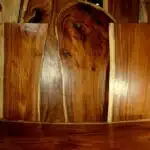




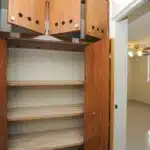

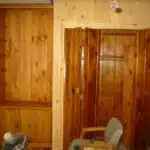





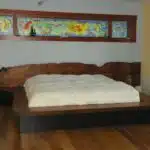

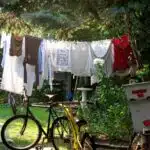





![How To Wash And Care For White Clothes 26 The only genuine borax soap cleanses hygienically saves the clothes and hands. 20 Mule-Team brand Boraxo white laundry soap [front]](https://green-life.blog/wp-content/uploads/2023/05/YDXLLCovnOjq-150x150.jpg.webp)


